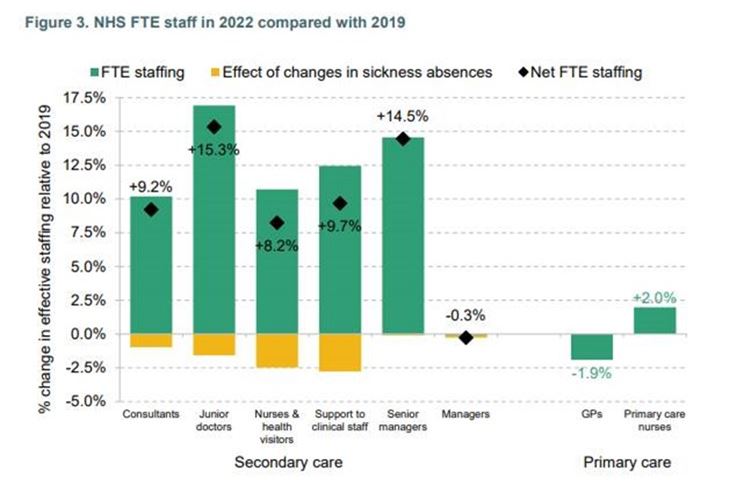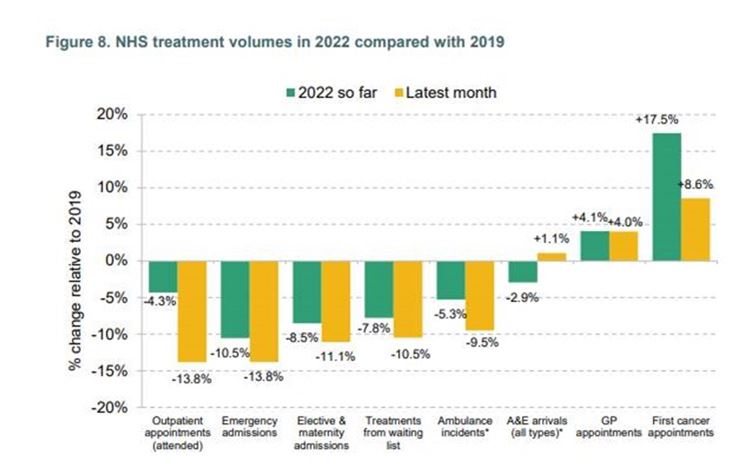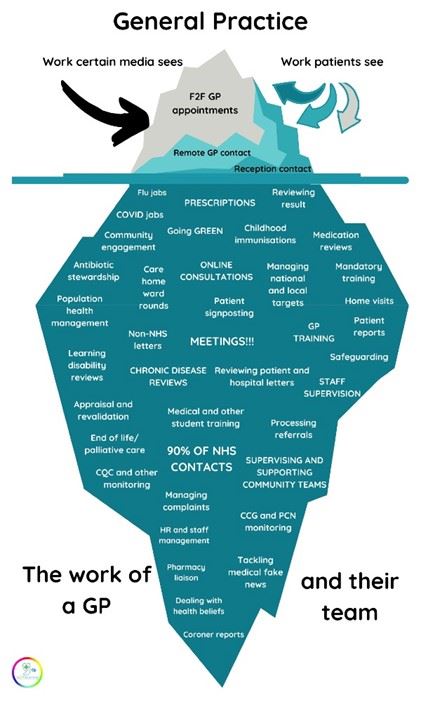Pressures on General Practice
The reason for writing this section is to try and give a factual overview of why General Practice in the UK is under strain at present. It hopefully helps put into context why there is such pressure on appointments. It can hopefully also provide some reassurance that White Horse Medical Practice is better placed than many to offer best medical care.
Covid has undoubtedly put a strain on healthcare services, but it is not the sole cause of the problems facing General Practice at present. It has accelerated changes that were already happening. Most of the challenges we currently face can be condensed into:
- Lack of workforce
- Increased demand (hospital care increasingly being moved into the community, an ageing population with increasingly complex health needs)
- Lack of estates (building space)
- Increasing administration/bureaucracy/targets
Workforce and Demand
These graphs show how, nationally, over the last 3 years, GP numbers have fallen whereas the numbers of hospital clinicians have significantly risen. Despite this, the number of GP appointments has significantly risen whereas hospital appointments across a range of departments have dropped (source – Institute of Fiscal Studies report R236).


Summary
To summarise – there has been a net gain of about 10-15% hospital clinicians compared to GPs but with about a 15-20% net increase in GP appointments compared to hospital. For General Practice this means less staff carrying out more work.
General Practice makes approximately 90% of all patient contacts in the NHS yet receives less than 10% of the budget.
In Oxfordshire, there are:
- 4 hospital doctors to every 1 doctor in General Practice
- 25 Trust nurses to every 1 nurse in General Practice
- 12 Trust clinicians to every 1 clinician in General Practice overall
Recent data collection from surgeries across Oxfordshire has shown:
- A fall of 11% in 2 years of GP clinical sessions
- A rise in the average list size (number of patients registered to a GP) for a full-time equivalent (FTE) GP to nearly 3000. The national average in 2014 was around 1600. Numbers above 2000 have been shown to be associated with adverse health outcomes. At White Horse our average list size is around 1620 for FTE GP so we are better staffed than most
- The equivalent of 3% of the entire practice population call their GP practice every working day, which equates to 69% of the population calling their GP practice every working month
- Demand in the week of the Group A Strep media stories (Dec 2022) increased inbound telephone calls by around 20%
At the White Horse Medical Practice, on average, a typical working week would contain:
- 2383 calls from patients
- 1172 Engage consult requests
- 694 GP appointments
- 1892 total appointments
Administration/bureaucracy – the hidden work
It’s not just consulting we do! In fact, only 20% of medical record entries are clinical consultations with the patient. The remaining 80% of all medical record entries made by the practice are workflow around patient care done outside of the consultation. The total number of administrative medical record entries generated from within the practice has increased 54% over the last two years. Below is a graphic which neatly outlines all the work that goes unseen within a Practice.
